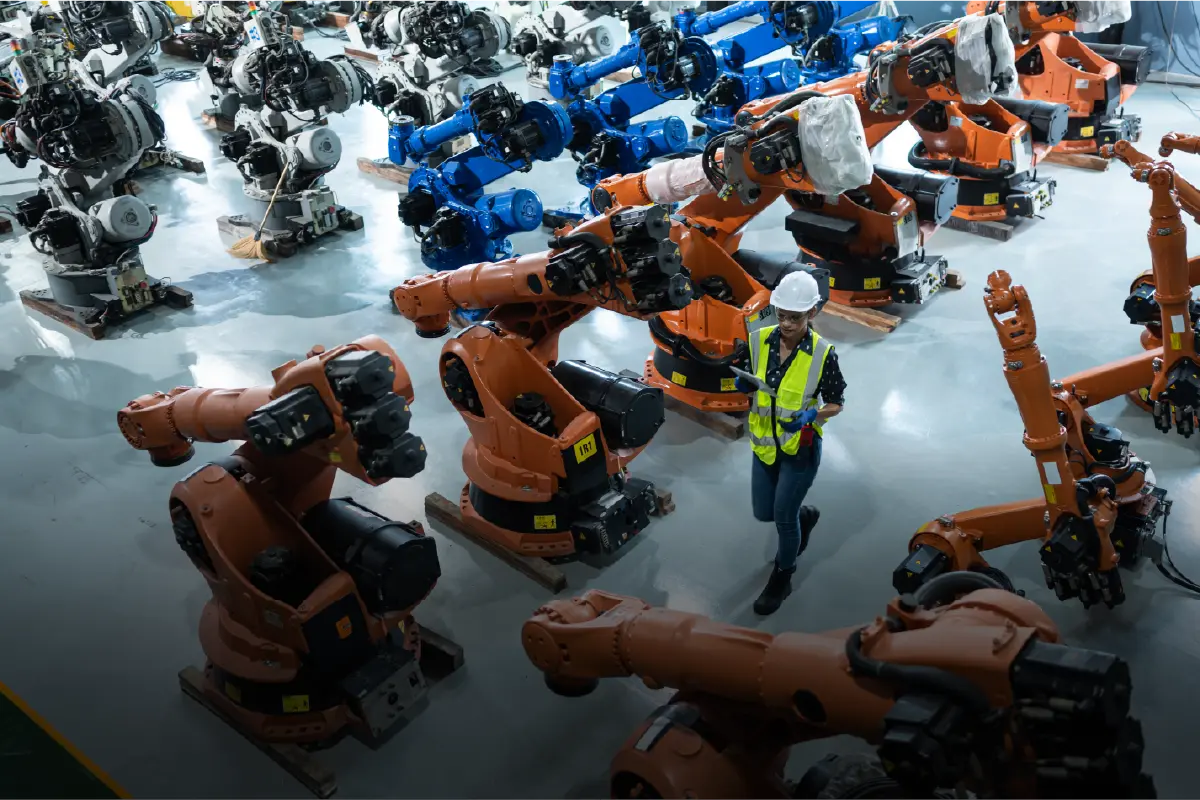Japan once ruled the semiconductor world in the 1980s. Then it slipped into a long quiet phase while the US, Korea and Taiwan sprinted ahead. Now the silence is over. Japan is stepping back into the race, not with noise but with a very intentional strategy. And the hint is right there in 経済産業省の 2025 White Paper, which puts digital transformation, semiconductors and supply chain resilience at the center of national priorities. When a ministry spells it out like that, you know the country is done watching from the sidelines.
Japan is not chasing the old memory chip crown anyway. It is going after the high value zones where precision and reliability matter. Power semiconductors for the new wave of electric mobility. Edge AI for the robotics boom. High performance computing chips for AI heavy data centers.
These three pillars electrification, automation and digital infrastructure are the real engines behind Japan’s semiconductor comeback. And this time, the world is paying attention.
こちらもお読みください: Tech for Humanity: The Ethics and Governance of Intelligent Systems
The Automotive Power Play
Japan’s auto story is not the usual EV cheerleading. It is a quieter shift that looks small from far away but hits like a body check when you zoom in. The real action sits inside the power electronics that decide how fast an EV moves, how cool it stays and how far it goes before whining about a charger. This is the battlefield Japan actually likes because it rewards engineering depth instead of loud marketing.
You see the transition playing out in the shift from old silicon to newer materials like Silicon Carbide and Gallium Nitride. These two sound like lab jargon but they solve the real problems that haunt EVs. SiC cuts energy loss, which means better range without begging the battery to bulk up. GaN handles heat like a champ, so the system runs cooler and the car keeps its performance even when pushed. This is the stuff that separates a genuine tech upgrade from a shiny brochure.
Toyota’s own signals back this direction. In its 2025 Technology Roadmap presented at the Hydrogen and Fuel Cell Seminar, the company doubled down on vehicle intelligence and advanced electrification paths. When Toyota leans somewhere, the suppliers around it start moving like a school of fish. That matters because Japan’s supply chain has players like Denso, Renesas and ROHM that are actively tightening control over their chips. Vertical integration is not a buzzword here. It is a survival strategy to reduce dependency and lock in high value parts of the EV ecosystem.
And then you have the industry running toward the CASE era. Connected. Autonomous. Shared. Electric. Each letter adds a new layer of semiconductor demand. A connected car needs communication chips. An autonomous car needs sensing and compute chips. A shared fleet needs durability and constant data feedback. An electric vehicle needs power devices everywhere. Multiply this across millions of vehicles and you get a semiconductor load that no country can ignore.
The fun part is that Japan’s strength is not in shouting about EVs. It is in building the hard components everyone else eventually depends on. Power electronics is that sweet spot. It looks boring until you realize it is the nerve system of the modern car. And Japan is quietly taking it back.
Robotics and Edge AI Building Japan’s Industrial Fortress

Japan is staring at a brutal math problem. The workforce is shrinking fast and the economy cannot keep waiting for some miracle turnaround. Robots are not a nice-to-have anymore. They are the replacement bench Japan needs if it wants factories to keep running and cities to keep functioning. And because Japan never does half measures, the country is quietly turning its robotics sector into a fortress built on hardware strength rather than hype.
The real shift happens when you stop thinking of robots as metal arms that repeat the same motion all day. Edge AI chips are changing the game. These chips let a robot think right where it stands. No クラウド delay. No bottleneck. No awkward waiting for a server in another prefecture. The robot sees, decides and acts in real time. That tiny difference turns a basic industrial helper into something much closer to a coworker that can adapt to clutter, angles, speed and human presence.
This is where Japan’s ecosystem clicks together. You have Sony owning the image sensor space, feeding robots the eyes they need to understand the world. You have Fanuc and Yaskawa supplying the actuators and motion systems that execute the decisions instantly. Put those two together and you get an ecosystem where AI software is only as strong as the Japanese hardware it sits on. The synergy is not theoretical. It is baked into factories, warehouses and production lines that rely on zero failure tolerance.
And while everyone talks about EVs and batteries, Honda’s 2025 Business Briefing quietly revealed something important. With a target of 2.2 million hybrid units, Honda is signaling years of demand for sensors, power electronics and embedded compute. These same components spill directly into advanced robotics and mobility systems. When the automotive giants push up component demand, the robotics world benefits without making noise.
So yes, Japan might be losing population, but it is gaining an industrial army. Smart robots powered by local compute, precision sensors and world class actuators. This is Japan’s fortress. And it is built on hardware no one else can easily copy.
Data Centres & The AI Gold Rush
Japan used to trail the global giants in cloud muscle. It stayed cautious while the US and China went all in. Yet the irony is showing now. That slow start gave Japan a cleaner slate and a safer reputation. And because Asia needs a stable home for its AI workloads, Japan is suddenly the place everyone wants. Its political stability, strong energy grid and growing regional importance are turning the country into a preferred data center hub for the Asia Pacific crowd.
Now here is where things get interesting. As AI workloads explode, the real pressure shifts to hardware. You need brutal amounts of GPUs. You need high bandwidth memory. You need servers that can handle models that grow like weeds. And once that happens, countries that control advanced semiconductor capabilities start looking like strategic gatekeepers. Japan gets this. That is why the country is pushing its own high performance computing backbone instead of waiting for imports to dictate the pace.
Rapidus is the loudest proof. It is Japan’s moonshot attempt to craft 2 nanometre logic chips built specifically for HPC and AI systems. People laughed early on. Fair. Any moonshot looks ridiculous until it doesn’t. But the government backing and the long term commitment show Japan wants a seat at the semiconductor league that actually matters. Not memory. Not commodity. Strategic logic for AI.
NTT’s moves support the same trajectory. Its 2025 technology releases talk about stronger data center infrastructure and research into quantum resistant networks. That signals a future where Japan is not only hosting AI workloads but securing them at a national scale. When a telecom giant invests in heavier infrastructure, the ripple effect lifts the entire semiconductor demand chain beneath it.
Put it all together and you see why this pillar exists. Data centers are more than buildings with racks. They have become the new battleground for semiconductor influence. And Japan is positioning itself to be a serious player, not by shouting the loudest, but by building the hardware foundations everyone else will need.
Geopolitics & The Supply Chain Strategy
Here is where Japan quietly plays the long game. While most countries argue about who builds what, Japan is stitching together partnerships that actually matter. Friend shoring with the United States is one of them. The two countries are aligning on commercial and industrial priorities so supply chains do not snap under pressure. Think less diplomacy talk and more real coordination on chips, research and manufacturing muscle.
Then you have the Kumamoto effect. People call it the TSMC plant but that barely captures what it unlocks. The factory drops into Japan and suddenly the ecosystem wakes up. Local materials suppliers start scaling. Equipment makers like Tokyo Electron get a stronger pull. Universities and talent pipelines sharpen up. It becomes a magnet, not a standalone project.
Japan also keeps its quiet superpower. Materials. The country still dominates photoresists, silicon wafers and niche tools that the entire AI and automotive chip world depends on. Everyone talks about fabs. Few talk about who controls the feedstock. Japan does.
SoftBank’s 2025 press activity points in the same direction. More AI investments. More data center expansion. More bets on digital infrastructure. When a heavyweight like that doubles down, it reinforces the idea that Japan is building a supply chain that is both strategic and shock resistant.
A Specialized Future

Japan is not trying to outbuild Samsung or Intel on raw volume. It knows that game is crowded and messy. Instead, it is choosing the lanes where precision beats scale. Power electronics. World class sensors. Industrial grade AI. These are the niches where Japan still has muscle memory and the discipline to push ahead.
When you look at the bigger picture, the three pillars start to lock together. Automotive electrification demands stronger chips. ロボット工学 needs smarter edge processing. Data centers are gearing up for heavier AI workloads. Put them all in the same timeline and you get a perfect storm that quietly shifts Japan back into a leadership role. Not loud, not flashy, but foundational.
So here is the thought you leave the reader with. Investors and tech leaders who shrug off Japan’s semiconductor sector are basically skipping the backbone of the next industrial revolution. Ignore it and you will end up chasing the story instead of shaping it.






